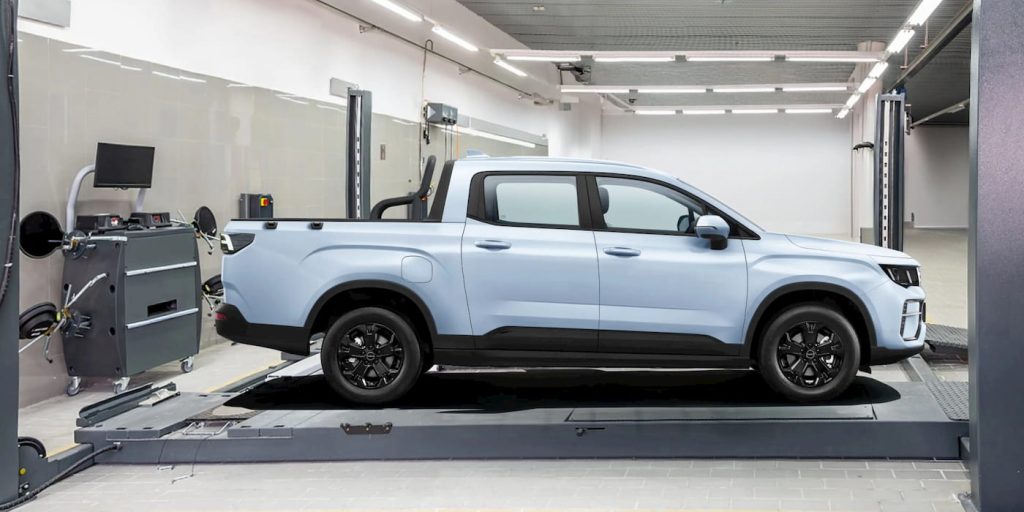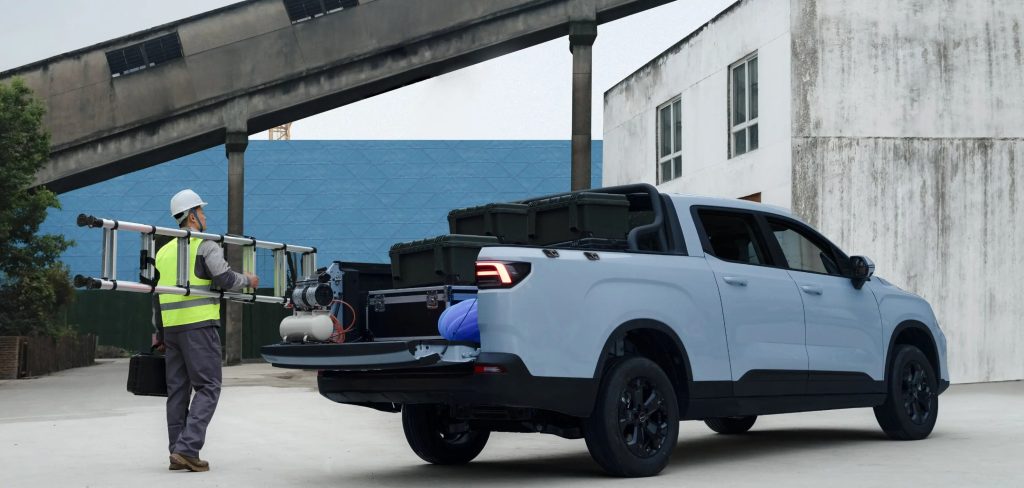Meet the Guy Who Drives a Street-Legal Chinese EV in the U.S.
Automaker BYD brought its e6 to America in the 2010s. Unbeknown to virtually everyone, a few survived.
By
Ryan Felton
| Photographs by Kent Nishimura for WSJ
Sept. 2, 2025 11:00 am ET
Erik Soderholm and his BYD e6 in Honolulu, where he tried to become BYD’s only dealer in the U.S.
Erik Soderholm is a special kind of unicorn: He drives a Chinese-made EV in a country that has effectively prohibited them.
The 71-year-old has a BYD model e6, one of only a handful of American drivers of fully registered BYD vehicles on the streets of the U.S. “Every day I go some place, I drive it,” said Soderholm.
The car itself isn’t very impressive. It is a boxy SUV that was an early low-tech model imported to the U.S. in the 2010s. What makes it unusual is that the U.S. has put up hefty regulatory defenses—tariffs of over 100%—to prevent Chinese-made electric vehicles like Soderholm’s from entering the U.S. market.
How Soderholm, the co-owner of a bus dealership in Honolulu, got into this unique position involves a contract between acquaintances, a legal battle that landed at the Supreme Court and a drive by an ambitious automaker to break into the U.S.
For years, automotive executives have been fretting about the potential entry of Chinese car companies in the U.S. market. The industry’s top lobbying group has deemed Chinese electric-vehicle manufacturers an “existential threat” to domestic carmakers. And the biggest threat has been BYD, the largest Chinese EV maker in the world.
Early days
BYD, which was founded in China in 1995, started teasing the idea of bringing a model to the U.S. around 2010, showing off the e6 at
the North American International Auto Show in Detroit. BYD executives pitched it as a vehicle for governments, utilities and taxis.
The company signed deals in 2015 with Uber and other businesses to incorporate a small number of the EVs in taxi fleets.
A Cars.com writer who
tested a Chicago taxi company’s e6s in 2015 described the vehicle as a relatively large crossover that was “rough around the edges,” with uneven braking and steering. The car hadn’t been serviced in close to a year because the service manuals were in Chinese, according to the review.
Soderholm’s e6 is one of only a handful of fully registered BYD vehicles in the U.S.
The e6’s electric motor. ‘We’ve had few problems,’ Soderholm said of the cars, but, ‘They work.’
Rattan Joea, founder and chief executive officer of California-based ride-share company Opoli, worked with BYD and received about 25 e6s from BYD
as part of a 2015 deal.
Joea said the e6 worked fine, but the main issue was a familiar one today: charging. The EV had about 180 miles of range at the time, and some Opoli drivers picking up passengers at the San Diego airport would need to recharge after just one trip.
“It was hard for us,” Joea said. “All you could do was run it a very short distance.” The company returned the vehicles to BYD after about six months, he said.
A legal battle
Hundreds of miles away in Hawaii, Soderholm was also intrigued by BYD and began negotiating a plan to become its first and only dealer in the U.S.
A no-nonsense, gregarious businessman with a law degree, Soderholm said the bus sales industry is small and everyone knows each other. “If there’s anybody who’s been in the business longer than I have, they’re either dead or retired,” he said.
‘Every day I go some place, I drive it,’ Soderholm said of his e6.
In 2016, Soderholm struck a dealer agreement with an industry acquaintance, named Macy Neshati, who had been hired by BYD as a senior vice president of sales and marketing, according to court records.
Soderholm would sell BYD’s buses and forklifts, and as part of the deal he also received a BYD all-electric e6 sport-utility vehicle to sell. The e6 was BYD’s first and only passenger vehicle brought to the U.S. that the company certified as street legal. Soderholm paid $49,500 each to buy four.
As a BYD dealer, he brought one of the e6s to an auto show in Hawaii and spent several thousand dollars hosting a BYD-themed expo for prospective clients.
But things turned sour after Neshati left BYD in 2018. His replacement, Robert Hill, went through Neshati’s old files and discovered a copy of the deal with Soderholm, the first time Hill learned of it, according to court records.
BYD Americas CEO Stella Li, who’d
spearheaded the company’s expansion dreams, was also unaware of the agreement, according to court records. The company sent a letter saying it wanted to rescind Soderholm’s dealer agreement.
Soderholm wouldn’t have it. “You can’t just cancel a dealer in Hawaii,” he said. Soderholm filed suit, alleging BYD violated Hawaii law by trying to pull out of the arrangement.
A federal judge in Hawaii sided with Soderholm and awarded the dealership $1.6 million in damages in 2021. BYD appealed to the Supreme Court but ultimately lost, and agreed to settle with Soderholm for just over $2 million.
After the check from the company cleared, Soderholm said he went to a local store in town and had it framed with Hawaiian Koa, an indigenous, high value wood. He keeps it hung on a wall at his house. “If you’re going to frame something, you use koa,” he said.
The framed check Soderholm received from a settlement with BYD hangs next to his law school diploma.
Six remain
All told, BYD imported 80 e6 vehicles into the U.S. certified as compliant with federal motor vehicle safety standards, according to the National Highway Traffic Safety Administration, which regulates car importing. NHTSA isn’t aware of any e6 vehicles imported after 2016.
BYD said the cars saw extensive use. “We understand that most, if not all, are now at the end of their service life,” it said.
Not all have been lost. Today, six e6 SUVs are registered in the U.S., according to data from S&P Global Mobility. Soderholm is tied to four of them.
He has racked up about 60,000 miles on the one he drives. A service manager at his dealership has cleared 100,000 miles. His son drives another with about 75,000 miles accumulated. His wife, however, hates the cars after the years of litigation, he said.
One of the e6s tied to Soderholm has racked up over 70,000 miles.
He says driving this car and seeing how BYD makes products all these years has shown him the potential of the company and its threat to the U.S. market.
“We’ve had few problems,” he said of his e6s. “They work. If I had my druthers, I’d be driving a 1972 911 Porsche.”
 Sooner or later we all going to embrace our Chinese overlords with the piff they putting out.
Sooner or later we all going to embrace our Chinese overlords with the piff they putting out. , we already lost the war of auto manufacturing.
, we already lost the war of auto manufacturing.















